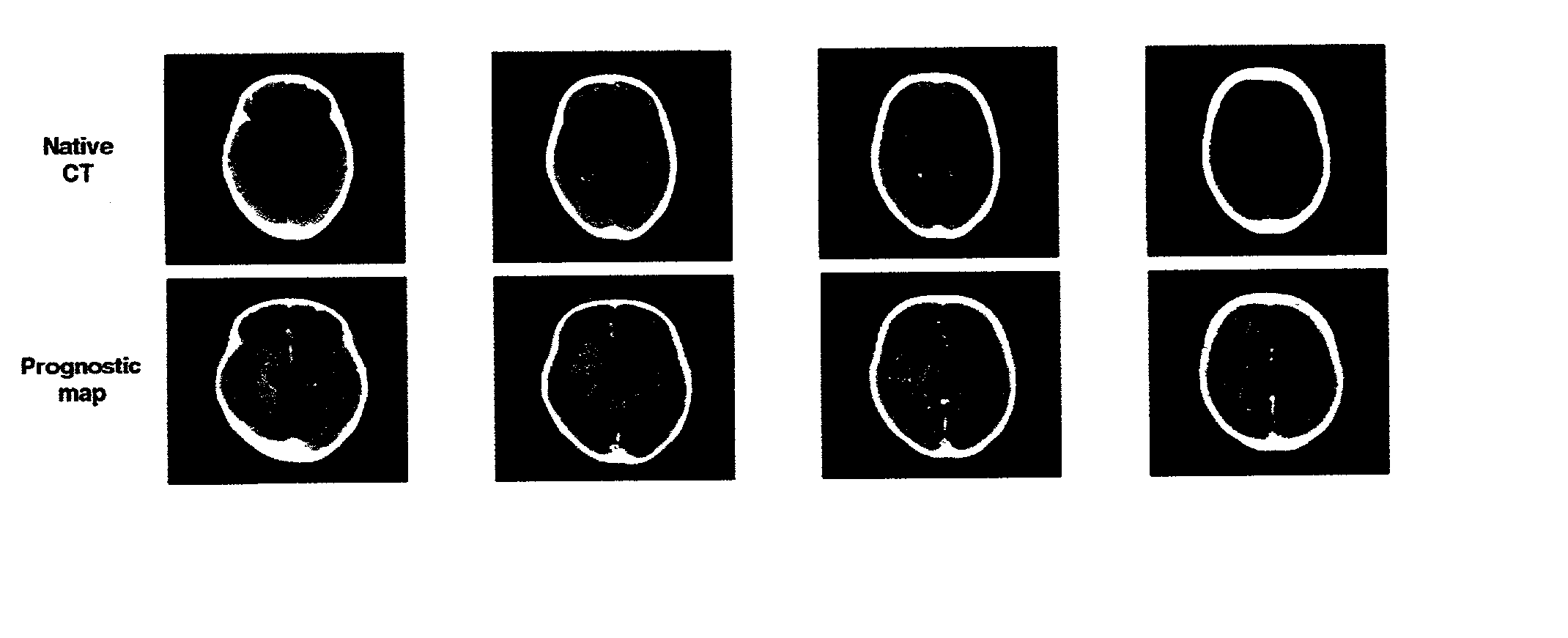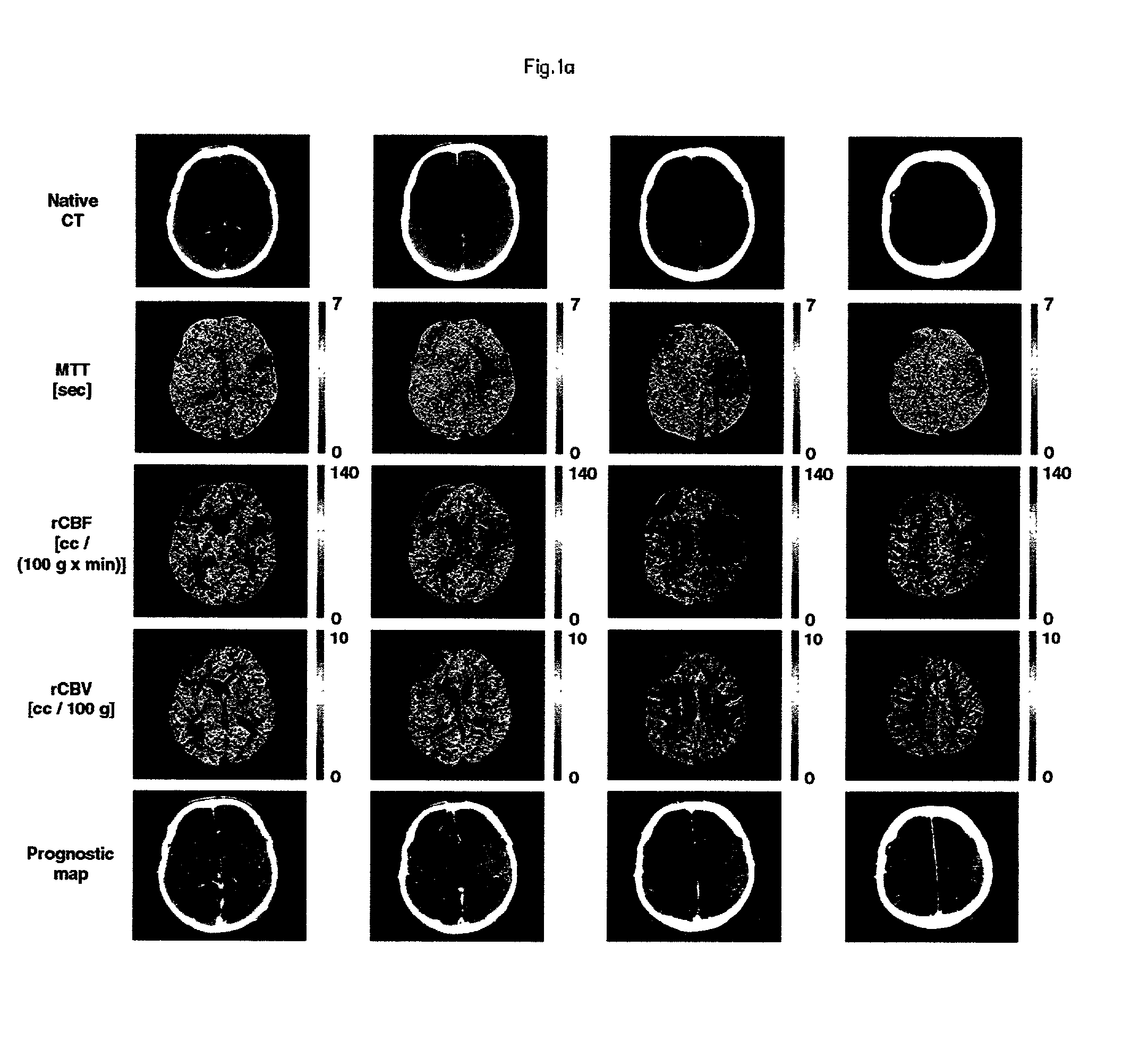Method and apparatus for creating penumbra and infarct images
a penumbra and infarct technology, applied in the field of penumbra and infarct images, can solve the problems of reducing the safety of thrombolysis therapy
- Summary
- Abstract
- Description
- Claims
- Application Information
AI Technical Summary
Problems solved by technology
Method used
Image
Examples
Embodiment Construction
of The Computer Tomography Images
[0121] FIG. 1a-f. Progression of infarct over penumbra in case of persistent cerebral arterial occlusion. 83-year-old male patient with suspected anterior left sylvian artery stroke. a Non-contrast cerebral CT (first line) obtained on admission, 7 hours after symptomatology onset, demonstrates an old right frontal lesion, as well as a slight left insula ribbon sign, whereas more sensitive perfusion-CT prognostic map (fifth line) identifies a deep left MCA ischemia, with an infarct (red) component located on the left semi-oval center and a penumbra (green) lying on the left internal capsula, insula and parietal operculum. Mean transit time (MTT) (second line) and cerebral blood flow (CBF) (third line) are increased and lowered, respectively, in both infarct and penumbra, whereas cerebral blood volume (CBV) (fourth line) is lowered in infarct, and preserved or increased in penumbra, because of autoregulation processes. b Admission angio-CT maximum inte...
PUM
 Login to View More
Login to View More Abstract
Description
Claims
Application Information
 Login to View More
Login to View More - R&D
- Intellectual Property
- Life Sciences
- Materials
- Tech Scout
- Unparalleled Data Quality
- Higher Quality Content
- 60% Fewer Hallucinations
Browse by: Latest US Patents, China's latest patents, Technical Efficacy Thesaurus, Application Domain, Technology Topic, Popular Technical Reports.
© 2025 PatSnap. All rights reserved.Legal|Privacy policy|Modern Slavery Act Transparency Statement|Sitemap|About US| Contact US: help@patsnap.com



